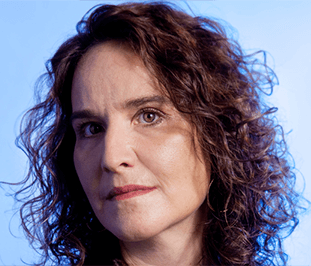Take it away
The surest way to help your team solve a really difficult problem is to make it harder. Gather them together and tell them that this time – as they embark on their quest to nail a consumer insight worthy of the name, or resolve a complex business issue with clarity – you are going to withdraw a tool or resource.
But not just any tool or resource. It has to be the one they would most readily reach for – the default option they would choose – to help them tackle that particular problem.
If the burning issue is consumer insights, that tool is original research. They’ll want budget for focus groups or customer immersions to help prise open new nuggets of revelation. So research budget is precisely what they don’t get. Immediately, what would have been a routine procedure, with much of the heavy-lifting outsourced, has to become more entrepreneurial. The team is sensitised, newly alert, forced to apply themselves in search of a more inventive approach to the problem.
The simplest option is for them to look afresh at the research information they already hold. In most brand organisations, this is copious, gathering digital dust somewhere deep in the system.
Encourage them to bring it out – even the stuff that doesn’t relate directly to the current issue – put it up on the walls of a single room and keep asking: “What story is this telling us?” It’s amazing how often revelations will come from a clear-eyed, perhaps even desperate, re-examination of what’s already there, rather than from probing endlessly for something new.
Meanwhile, the removal of the professional researcher from the scene encourages amateur sleuthing of the most direct kind. Could your team take a leaf out of Carolyn McCall’s book? The easyJet chief executive goes up and down the cabin with the bin bag every time she takes one of the airline’s flights, as a way to get closer to what customers are thinking and feeling.
A couple of days in the call centre can be revealing – listening to how people sound when they’re not part of a group with a nice plate of biscuits and a slick moderator.
And when was the last time your team got on the road with salespeople? Chance observation and trade anecdote may not be as scientific as fancy research methodologies, but it is the kind of input entrepreneurs use – partly because they can’t afford anything else – to come at things differently and challenge the status quo.

For those more complex marketing problems with variables everywhere – portfolio analysis, say, or channel rationalisation – the resource the team will beg for is time.
Let them know you have listened to them, then give them your decision. Halve it. Take weeks away. Set deadlines that will draw gasps of protest.
Here’s what will happen: sacrifices and trade-offs will become more vividly apparent, and irrelevant byways more ruthlessly blocked. Sub-tasks will be assigned more intelligently and some, under the sharper scrutiny that urgency fosters, will be dismissed as superfluous.
The size of the team will shrink too – as those who demand to be waited for, because of some other commitment, are bypassed. Reducing time is a wonderful way of sifting who really cares about resolving the problem. If they do, they’ll find a way of being there. If not, you’re better off without them.
For the presentation of recommendations itself, continue that temporal discipline. Set 15 minutes maximum. Anyone who ever attended an Account Planning Group/Campaign Battle of Big Thinking conference, with its gladiatorial, 15-minute-per-speaker format, will know just how much can be communicated in that interlude when you trim away every bit of conjecture, whimsy, digression and flab.
And so it goes. Shut down email to encourage better sharing. Outlaw workshops as a means of achieving alignment. Ban lovely words such as “life” and “vibrant” to achieve livelier, more vibrant brand codifications.
Make a hard task harder. Take things away not because they are innately bad but because they are so apt, so sweetly crafted for purpose that they invite teams to proceed uncritically, along familiar tramlines, just as they have always done. And that, in the end, is always the underlying problem.
The famous injunction to strip away was coined by the architect Mies van der Rohe. He was not alone:
“Any intelligent fool can make things bigger, more complex, and more violent. It takes a touch of genius – and a lot of courage – to move in the opposite direction.”
EF Schumacher
“To achieve great things, two things are needed: a plan, and not quite enough time.”
Leonard Bernstein
“I have yet to see an executive, regardless of rank or station, who could not consign something like a quarter of the demands on his time to the wastepaper basket without anybody noticing their disappearance.”
Peter Drucker
“I think there is a profound and enduring beauty in simplicity; in clarity, in efficiency.”
Sir Jonathan Ive
“As you grow in this business, you learn how to do more with less.”
Morgan Freeman
